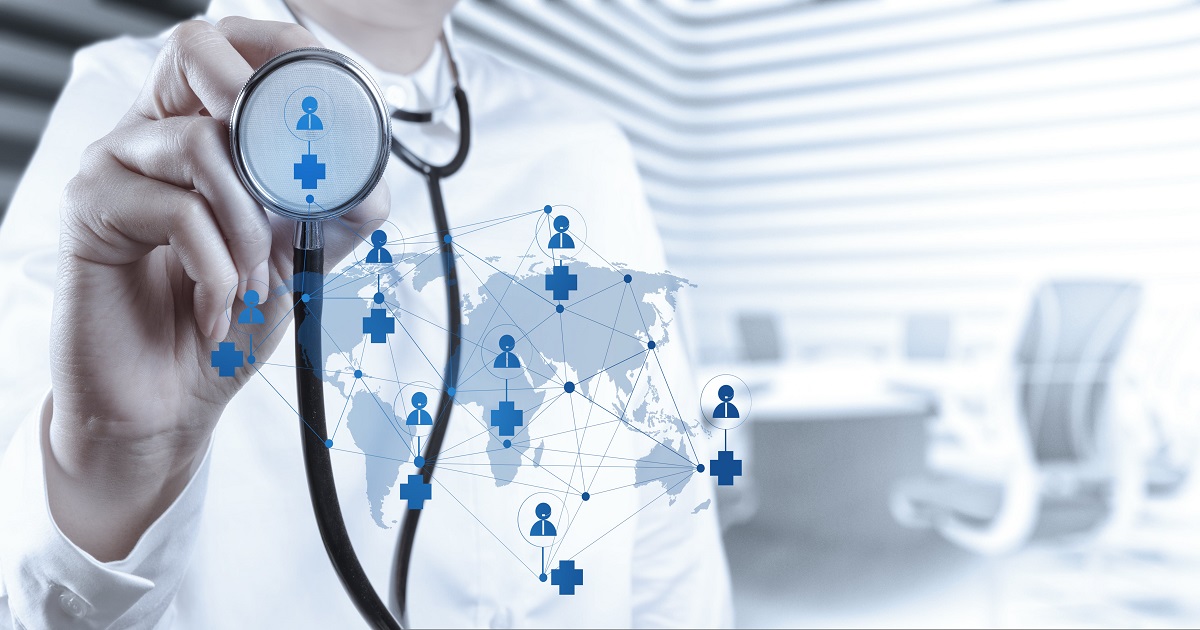
Digital Healthcare, Medical Devices
Article | June 27, 2023
© 2019 American Cranes & Transport Magazine.
Night moves
Moving over-sized, over-dimensional loads during the day is no easy task. Adding darkness and poor visibility to your trip adds numerous hazards that must be thoroughly identified and mitigated.
When planning a specialized transportation project, there are three primary objectives:
Ensure the safety of the transport crew and the general public.
Protect the integrity of the cargo and transport equipment.
Protection of Infrastructure – roads, bridges, traffic control devices, utilities and the like.
For the most part, specialized carriers perform night transports to reduce the impact on day-time commuter traffic. Route challenges – construction, road closures, lane crossovers, bridges and other obstacles – are often better solved at night. Police and utility support are often more readily available at night.
Night transport hazards include employee fatigue, slowed reaction time and poor visibility for both the transport crew and motorists. Decreased visibility increases potential for trips, falls, runovers, back overs and equipment strikes.
It can’t be emphasized enough how critically important it is to ensure that all transport crew members have had adequate rest for these projects. Workers need complete rest before the transport takes place. A fatigued worker is a danger to himself as well as his fellow crew members. And while impaired drivers can be out on the streets during the day, there is often an increased number of these drivers on roadways at night.
Limited visibility is a given when it comes to night-time transports. Limited visibility increases the chance of going off route and striking objects, and the transport driver’s maneuverability and reaction time maybe be reduced. Road conditions can abruptly change during a night-time transport. Therefore, it is critically important to know the route and to have drivers run it in advance. Statistically speaking, accident frequency increases when the transporter goes off route and attempts to correct itself. While providing the necessary lighting to make night transport is important, artificial lighting can pose visibility hazards, especially to the drivers. Other hazards may include bright work lighting that produces glare.
OSHA has identified the “Focus Four” accident events that make up the most serious injuries and fatalities in the construction business. They are also known as the “Fatal Four.” Many carriers have had employees injured in the past as a result of one of these four incidents.
Caught-in-between hazards are injuries resulting from a person being squeezed, caught, crushed, pinched or compressed between two or more objects or between parts of an object. This is also referred to as “pinch points or entrapment.” As the transporter navigates its designated route the landscape is continuously changing. It is imperative that all ground crew members maintain situational awareness and not place themselves between the moving transporter and fixed objects such as guardrails, parked vehicles, buildings, etc.
Struck-by hazards are injuries produced by forcible contact or impact between the injured person and an object or piece of equipment. There are many potential struck-by hazards. Guide wires that must be raised can snap and strike workers on the ground. Tag lines should be used to control loads. The primary purpose of using tag lines is to control the load but more importantly give the worker a safe buffer distance away from suspended and the uncontrolled movement of these loads.
Fall hazards are anything that could cause an unintended loss of balance or bodily support and result in a fall. To prevent fall hazards all workers should have either fall prevention or a means of fall protection in place. As a rule, 100 percent tie off is required when using a fall arrest system (FAS). FAS’s should be thoroughly inspected before each use.
Electrocution hazards result when a person is exposed to a lethal amount of electrical energy. Maintaining minimum approach distances (MAD) is a critical safety practice. As everyone knows, equipment does not have to physically make contact with energized equipment or lines to cause serious injuries and even death. Electrical energy can “jump” from lines into equipment that has encroached the Minimum Approach Distance based on its voltage.
As noted above, it is critically important to ensure that crew members have had adequate rest and are not fatigued. Night transports are difficult enough, and the last thing you want to introduce are tired and fatigued workers. Being fatigued creates a risk for anyone who undertakes an activity that requires concentration and a quick response.
All companies should have an “Hours Worked Policy” that clearly spells out the number of hours allowed to work before a mandatory rest period. This policy should ensure that the transport crew has had adequate rest during day, that a fatigue assessment is conducted on all team members, that crews are never allowed to work double shifts and that employees are prohibited from driving long distances to return home.
Dealing with darkness
Visibility and slowed reaction times should be a part of the project planning. A limited amount of ambient light that only projects upward and outward impedes vision and increases blind spots for drivers. Lights cast shadows, increasing the potential for slips, trips and falls.
All transport moves should establish pre-planned Emergency Action Plans. When an emergency occurs, time is of the essence and can mean the difference between life and death. If it is a long-distance move the emergency numbers and first responder information can change. Crews should know when it’s time to seek emergency “safe harbor.”
When approaching overhead obstructions such as guide wires, electrical lines, communication lines and overpasses, travel speed is of utmost importance. Again, pre-route surveys provide advance knowledge of obstructions. At night, visual identification of roadway obstructions is reduced and delayed and last second reactions to oncoming hazards can lead to accidents. Support personnel in bucket trucks also have the challenge of reduced visibility.
In darkness, overhead hazards often require more utility support for height clearances, which means the need for raising energized lines, lifting traffic control devices, trimming tree limbs, releasing tension on guide wires, removing highway signs, repositioning street lights and raising railroad crossing arms.
Traffic control can also create hazards. The general public may ignore pilot car lights at night, so it’s often advisable to also use police escorts. All support vehicles and trucks should be properly marked and equipped with strobe lights.
The configuration of the transport system can also be a hazard. Navigating sharp turns or crossovers is greatly reduced based on the length of transporter. Snake-like maneuvers of trailers pose an increased risk.
It’s important to never allow personnel to take shortcuts by walking through or under transporter while it’s in motion. Stop or have the worker go around.
Situational awareness
The transport crew must always maintain “situational awareness” to prevent being in line of fire or entrapped between moving and fixed objects.
All the equipment used in the transport must be deemed safe. You should have procedures to conduct thorough assessment of all new equipment.
Ensure machine guard devices are in place especially around moving components.
Provide secured areas using catwalks/railing system.
All steps should be designed with slip resistant material.
Ensure that all deck openings are properly protected and covered.
Components that hydraulically extend and retract should be clearly posted with DANGER signs.
Roadway conditions are always a bigger concern at night. Assess weather conditions prior to start of the project and don’t take chances. A “Go – No Go” criteria should be developed for each project. Once the decision is made to transport the load there is no turning back. Changing weather can cause the transporter to lose traction. Underpasses that are shaded during the day will likely freeze up more quickly. If the temperatures drop significantly during the move, equipment performance may be affected – especially those with hydraulics.
Because the reaction time of the transport crew is reduced, speeds are often reduced, causing potential for curfew violations. Boarding and deboarding the transporter increases risk for slips and falls. Other potential road condition hazards include grade of road, width of road, shoulder surfaces, railroad crossing clearances and bottoming out, overpasses, tight and narrow turning lanes, parked vehicles and frequent grade changes.
Crew prep is essential and should be a part of the job plan and job training. The team should be briefed each day to identify the responsibilities of all crew members. The crew should know it is empowered; everyone has the authority to stop the transport if something looks unsafe or when someone is unsure. In the event of a complication, crews should be informed of how to regroup and formulata mitigation plan. There should be an established means of communication that is limited only to transport issues. Most importantly, crew should embrace these words: When in doubt, call time out!
A Task Hazard Analysis (THA) should address all scope of work activities, identify hazards and have a mitigation plan for each, clear channels of communication, the traffic control plan and an “Emergency Preparedness Plan.” And finally: Know the route; ride the route and expect the unexpected.
Edwards-Moving_Faktor-5 (2).jpg
Edwards Moving performs a night move using it’s Goldhofer Faktor-5 transport system.
Keys to a successful night transport
Early planning and attention to detail. Anticipate roadway hazards such as guardrails, poles & hydrants that pose obstruction with travel path or turning radius.
Preparing a detailed traffic control plan.
Thorough due diligence throughout scope of work.
Established contingency plan for equipment.
Read More

Digital Healthcare, Medical Devices
Article | May 17, 2023
Do you have a difficult time explaining your mental health issues to your family and friends?
If so, here are six suggestions on how to discuss your mental health issues with your friends and relatives.
1. Talk to a counselor: The most important thing that you need to do is to talk to a counselor about your mental health problems. Seeking professional help will go a long way in overcoming your current issues. In addition, a counselor will be able to give you additional advice on how to deal with your friends and family members.
2. Don’t argue with others: It is important that you do not get into arguments with those who are giving you a hard time. Your number one priority is getting your life back on track. Your health is more important than what other people may think.
3. Watch who you hang out with: It is important to surround yourself with positive people. Try to keep your distance from those people who are giving you a difficult time. Remember that your goal is to remain positive and hopeful. Do not let the negative people in your life bring you down.
4. You are not alone: It can be very frustrating to deal with your mental health issues when your friends and relatives are on your case. Remember, you are not alone. There are millions of people around the world who struggle with their fears, anxieties, and depression. The key is to find those people who can relate to you.
5. Stand your ground: It is important to stand your ground when dealing with family members and friends who are giving you a hard time. Explain your situation and your feelings to the people in your life, however don’t let them hassle you. Your number one priority is to get better and not to please everyone that you know.
6. Join a support group: There are many mental health support groups in your area that can help you. Many hospitals, churches, and counselors in your area will be able to provide you with a list of groups. These mental health organizations will be supportive of your situation and they can give you additional advice regarding your problems.
Read More

Digital Healthcare, Medical Devices
Article | July 7, 2023
Technology in the 21st century is the fuel that drives innovation and ease in almost every industry today. The healthcare sector isn’t far behind. In fact, the medical industry has taken the concept of the Internet of Things and took it to a new level altogether to reimagine the use of medical technology.
Imagine multiple devices like phones, cameras, GPS sensors, and computers interacting with each other through a seamless transfer of data. Now consider wearable medical devices. The exchange of critical medical information through a web of real-time data networks activates near instantaneous responses from doctors, nurses, and medical services. The aim is to anticipate the need for medical attention long before it is needed and remedy the concerns before they reach a critical stage.
That is exactly how the future of the Internet of Medical Things (IoMT) is shaping out to be.
How IoMT is Redefining Everyday Health?
IoMT is a next-generation solution that embeds cutting-edge monitoring and analysis of individual healthcare journeys through medical devices. The smart watch is the most recognizable wearable medical device that is used by millions of people daily to keep tabs on their vitals.
For instance, the Apple Watch series 6 maps blood oxygen levels, sleep patterns, ECG levels, and also reminds the user to wash their hands after returning home.
The market for healthcare IoT products is vast and is constantly expanding. The Tango Belt is a leading example of smart wearable technology that is revolutionizing elderly and disability care. The belt is designed to sense falls and deploy airbags to soften the impact. In addition, it alerts caregivers in the event of a fall. The belt also uses data analytics by collecting mobility data that is then synced to a smartphone app for displaying metrics.
Technologies that Empower IoMT
With the diverse tasks that medical devices must perform, applications exist across a wide spectrum, from artificial intelligence to 5G networks to the cloud.
Consider a pacemaker, for instance. Modern pacemakers are embedded with a multitude of technologies that communicate with each other to send critical patient data to physicians. A pacemaker is a bioelectronic implant that is placed in the chest to control the heartbeat. But a smart pacemaker goes a step further. It is equipped with wireless bluetooth technology that communicates with the patient’s wearable medical device. The smart device or phone will then transfer this data to physicians for check-ups and even alert doctors in the case of anomalies.
To Round It Off
IoMT will subsequently power all medical devices and usher in a future where technology forms the backbone of healthcare service delivery. Although wearable medical technology has been around for decades, the development of a streamlined communication channel between them has redefined their use. Smart medical devices are no longer just an aid but a source of vital individual medical data as well as a way to anticipate care and medical attention.
Read More

Digital Healthcare, Medical Devices
Article | July 7, 2023
Delve into the EHR tools reshaping the healthcare industry for an efficient and patient-centric future. Unlock streamlined workflows and data-driven decision-making through these EHR software tools.
Adopting an EHR tool has become crucial for clinics and healthcare providers striving to revolutionize their operations and deliver a high standard of care. These innovative EHR software tools possess the potential to transform healthcare workflows, enabling clinics to optimize processes, streamline operations, and provide an exceptional level of care to patients. From facilitating seamless communication and improving operational efficiency to enhancing patient satisfaction, EHR tools unlock possibilities for improved operations, accurate claims processing, and enhanced financial management within practices.
This article explores the top 10 electronic health record tools that are reshaping the healthcare industry and paving the way for a more efficient and patient-centric future.
1. Avalon EHR
It is an EHR evaluation tool that prioritizes robust physician-patient engagement, setting it apart from complex electronic health record (EHR) systems. With an unwavering focus on reliability and security, Avalon offers a cutting-edge solution for the future of healthcare. Its key features include CureMD's clinical overview, which presents alarms, trends, and patient histories on a single screen, ensuring comprehensive insights. The platform also boasts a specialized rheumatology section with templates for typical symptoms, simplifying documentation processes. Furthermore, Avalon provides regular updates for various medical specialties following CPT and ICD codes, ensuring compliance, proper medical procedures, and diagnosis recording. Notably, it supports automated overnight transcription of dictations into templates, significantly reducing the time and billing service partners' costs associated with finding and documenting clinical findings.
2. AdvancedBiller
The AdvancedBiller Grow program offers medical billing companies a comprehensive and advantageous solution, combining industry-leading software solutions with exclusive partner benefits. This program is designed to drive optimal outcomes by providing a unified practice management workflow, excellent support, free promotional opportunities, and competitive, scalable pricing. With a focus on boosting performance and profitability, AdvancedBiller equips businesses with the necessary tools to excel in their field. The program features custom health plans that assist doctors in managing individual patient needs based on age, sex, and lab findings. Additionally, it offers customizable note-taking templates to align with specific workflows and preferences. This EHR tool also facilitates telemedicine appointments, enabling patients to communicate face-to-face with their doctors and receive important notifications. Furthermore, the program enhances data management by allowing doctors to save sensitive information and screenshots during conference calls securely. By leveraging the AdvancedBiller Grow program, medical billing companies can optimize operations, deliver superior care, and achieve notable success.
3. Halemind
EHR integration tools, such as Halemind, present a game-changing solution that enables clinics to elevate their operations and provide superior patient care. This comprehensive platform offers many features, including appointment scheduling, patient registrations, check-ins, consultations, prescriptions, billing, and reporting, all aimed at delivering a seamless customer experience. With Halemind, clinics can transform their business and scale up their operations. The platform also provides specialized functionalities for pharmacies, allowing real-time access to customer histories, order tracking, invoicing, and supplier management. In addition, hospitals can benefit from Halemind's capabilities, such as operations planning, invoicing, payment collection, patient sample tracking, and customizable data display. Medical facilities can further enhance their efficiency by utilizing its in-patient module for managing wards, rooms, and beds and generating discharge reports.
4. SIMPLEX HIMES Patient Portal
SIMPLEX HIMES software incorporates an optional yet powerful feature, the Patient Portal and Mobile Application, designed to revolutionize patient engagement and communication. This EHR tool seamlessly integrates with existing websites, providing healthcare facilities with a comprehensive EHR tool to enhance the patient experience. The Patient Portal enables efficient control of patient intake, bed availability monitoring, operating room scheduling, and centralized patient demographic management within hospitals. The software streamlines operations for pathology labs by managing information about referral laboratories, generating barcodes for sample tracing, and delivering timely test result alerts via email or text. Additionally, patients benefit from self-service portals, empowering them to conveniently schedule appointments, access medical records, locate service provider locations, and communicate with their doctors.
5. Patient Engagement
The Patient Engagement tool offers patients unparalleled access to their personal health information, visit summaries, and lab results, empowering them to take an active role in their healthcare journey. With the help of this EHR tool, patients can conveniently book appointments online using the healow Open Access feature, efficiently manage their medications, and engage in secure messaging with their healthcare providers. In addition, the eCW software utilized within the tool provides organized data capture, trend analysis, and customizable documentation options for various healthcare specialties. Clinicians can effortlessly retrieve any aspect of the patient record through the Patient Hub, ensuring complete and efficient access to vital information. Furthermore, eClinicalWorks Version 11 introduces Eva, a computer program that assists physicians in evaluating patient records, leveraging details from the Progress Note tool and data flowsheets. This advanced functionality enhances clinical decision-making and promotes efficient patient care.
6. Electronic Prescription
The Electronic Prescription tool revolutionizes prescription management in the healthcare industry, offering a seamless and efficient solution for healthcare providers. This advanced software streamlines the prescription process by eliminating traditional prescription pads, enhancing convenience and accuracy. AllegianceMD, integrated within the tool, enables patients to fill out their history and demographic information online within defined clinic limits, facilitating seamless integration of patient information. This EHR tool encompasses a range of features, including an active/inactive medicine list, e-refill requests, an allergy list, and comprehensive drug interaction checks. The software also includes a lab module for efficiently tracking test results and follow-ups. With its extended functionalities, the Electronic Prescription tool elevates prescription management, promoting patient safety and enhancing workflow efficiency for healthcare providers.
7. Telehealth
WRS Health Telehealth offers healthcare providers and patients a secure and reliable virtual care experience. With seamless integration into the electronic health record (EHR), this comprehensive telehealth platform provides a single platform for managing virtual patient encounters. Designed with ease of use in mind, both patients and providers can navigate the user-friendly interface effortlessly. This EHR comparison tool is a safe alternative to in-office visits, offering private and secure online consultations that comply with HIPAA regulations. This telehealth solution ensures a smooth and efficient workflow with its seamless integration of clinical and revenue cycle management (RCM) functionalities.
8. Practice Management for Billing Companies
The Practice Management tool offered by SequelMed is a comprehensive solution that streamlines operations and enhances efficiency in healthcare practices. This advanced tool automates various tasks, including billing, claim processing, revenue management & clinical procedures, and generates analytical reports for comprehensive insights, with the option of bundled or separate programs for electronic health records and practice management. The software provides interoperability with imaging systems and medical equipment through HL7 and DICOM interfaces, offering flexibility in deployment options with on-site or cloud hosting. In addition to its core functionalities, it enhances patient engagement with real-time communication, online patient registration, active prescription lists, immunization schedules, and a patient portal. The Practice Management Tool simplifies computerized prescription processes and promotes connectivity across healthcare systems, enabling healthcare providers to optimize their operations and deliver efficient, patient-centered care.
9. Medical Practice Management Software
The Practice Management Software offers healthcare providers a powerful solution to streamline operations, ensure accurate claims processing, and expedite reimbursement cycles. With its intuitive design and comprehensive features, this software empowers practices to take control of their operations and optimize efficiency. Users can benefit from the HIPAA-compliant claims clearinghouse provided by NueMD, allowing for the seamless processing of unlimited claims. The software makes it easier to submit paper claims by reducing it to a single click, and it also simplifies payment transactions by incorporating credit card processing. Additionally, the ONC-ATCB-certified EHR enhances clinical workflow by providing charting capabilities, e-prescribing, laboratory report monitoring, and secure fax management.
10. LiquidEHR
LiquidEHR is a cloud-based electronic health record (EHR) solution ideal for small and midsize optometry practices. It offers a range of features to manage medical records, scheduling, and billing effectively. The software includes specialized tools specific to optometry, such as historical IOP charts, drawing tools, built-in eye charts, frames data integration, and image management. Clinicians using LiquidEHR have access to electronic insurance filing tools, patient recalls, drug interactions and allergy checks, problem lists, medication recommendations, educational resources, vital signs monitoring, and more. The system also ensures data security through access controls, audit logs, and encryption features.
Future Scope
By staying informed about the top EHR tools highlighted in this article, medical practitioners can unlock streamlined workflows, improved communication, and data-driven decision-making to optimize clinical practices and deliver exceptional patient care. The future of EHR assessment tools looks promising, with emerging trends like artificial intelligence, machine learning, interoperability, and telehealth shaping the way forward. By embracing these advancements, healthcare professionals can stay ahead of the curve, maximize operational efficiency, and position themselves for success in the healthcare industry.
Read More